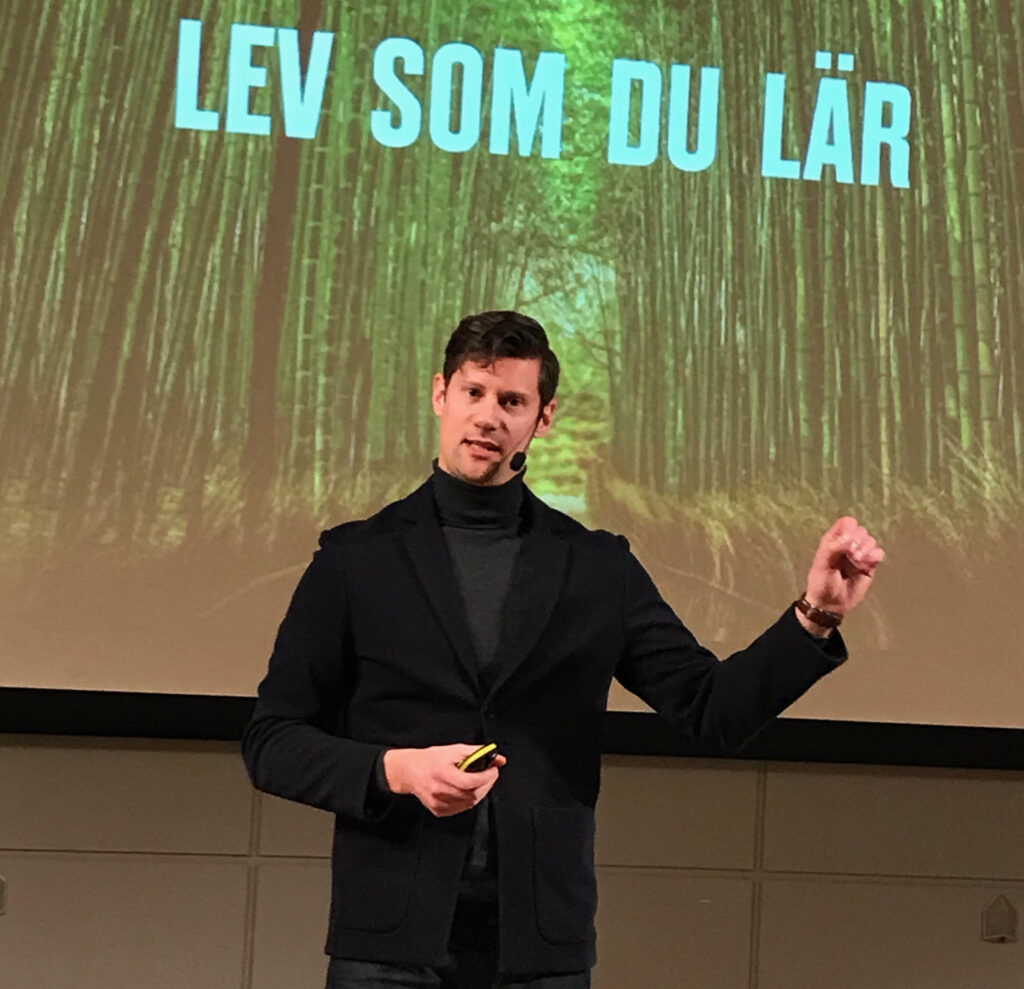
It is really about time for marketers and advertising consultants to think carefully about what they are doing. Otherwise there is a great risk that adverting is losing the ability of creating increased profitability and that creativity will be considered unnecessary.
Earlier this summer, IPA – the Institute of Practitioners in Advertising (“British Comm”) published an alarming report by Peter Field called “The crisis in creative effectiveness”. He points out how the effects of creatively rewarded campaigns have greatly deteriorated in recent years and today is less effective than they have ever been in the entire 24-year run of data.

If anyone knows what creativity can accomplish, it’s Peter Field. He has, often together with Les Binet, studied the IPA’s Advertising Effectiveness Awards combined it with studies of The Gun Report, which follow up the results of 46 different creative competitions around the world (and which is currently included in the WARC Rankings).
The picture has been very clear.
Until 2010 the picture was very clear. Award winning creativity produced 12 times as much effect in terms of market growth as non-rewarded advertising.
But the first major setbacks came with the financial crisis, which had very serious consequences for the ability of creativity to create effects. Much depending on the fact that more and more focus turned to short-term activation and the budgets shrank sharply.
In the fall of 2016, Peter Field and Les Binet described the problem in a report and a seminar on the theme “Selling Creativity Short” (I have written more about their conclusions in an earlier post on my blog).
At that time, they also found that there was a great risk that that it would soon not be possible say that creative advertising was really that much more effective. And now Peter Field has written a “report he hoped he would never have to write”, pointing out that we are already there.
Over the past ten years, Peter Field notes, creatively rewarded campaigns have lost more and more of its effect are now no more effective than non-awarded campaigns.
What is the reason for this development? Advertising Fatigue? After all, people are getting more and more tired and annoyed at advertising. We know this from many reports.
And, of course, there is reason to get annoyed at advertising, but that is not because there is too much creative advertising. On the contrary. It’s just too little of that kind.
Great advertising doesn’t get rejectet. It is not only tolerated, but also popular. Even longed for and sought after. The professors Sara Rosengrenand Micael Dahlénat the Stockholm School of Economics, have shown this in their research, where they established the concept of “advertising capital”.
Advertising with high advertising capital creates both more value for businesses and added value for consumers. This means that the consumers will want more advertising from these companies and the advertising can do their job (You can read more about that here).
The main explanation for the development is instead, according to Peter Field, that more and more of the advertising today is short-term activation-focused and it has also promoted the trends in strategy and media development that we see.
But for many years Peter Field and Les Binet – and many others – have shown that creativity delivers very little of its full potential in the short term, yet the trend towards short-term and ultimately ineffective creativity continues.
Shrinking budgets, impatience, short-termism and a focus on social platforms have affected advertising opportunities. This also applies to advertising that has been rewarded in various competitions.
Already last year, for example, one could see a very disturbing development in the Creative Effectiveness competition in Cannes.
In order to participate there one must previously have been at least nominated for a creative lion. After that you can participate in the Creative competition and prove that the rewarded campaign also had measurable effects. In itself, a great idea.
But among the campaigns nominated for Creative Effectiveness in Cannes last year, the long-term perspective had dropped significantly.
The majority of the nominated campaigns ran three months or less. Only 6 percent ran for 6 to 12 months. Only the year before, that share was 15 percent.
None of the 2018 nominated campaigns lasted for more than a year, compared with 15 percent of the 2017 nominee campaigns lasting for 1 – 3 years.
Peter Field is of course very concerned about this development. Not just because short-term campaigns generally produce less impact than long-term ones, but also because it applies even more clearly to creatively rewarded campaigns. Short-term, creatively rewarded campaigns are about half as effective as long-term, rewarded and even less effective than those not even rewarded.
“Creativity does not produce a short-term effect. So the increasing willingness of juries to favor short-term results inevitably results in worse effects for rewarded advertising,” Peter Field notes in his report, adding that it is unclear why juries are also becoming increasingly focused on short-term campaigns.
“Perhaps judges just prefer digitally focused campaigns or data-driven creativity?”, he wonders and points at the fact that these short-term awarded campaigns on average allocated 2.5 times more of their budget to online media than the long-term creatively awarded campaigns that they are increasingly replacing.
Or, I wonder, could it be that the juries feel compelled to follow the trends, are afraid to act as a counter-backward striker if they highlight advertising that goes heavy in “traditional” media? Or do they have too few examples of great, long-term advertising to judge?
In any case, I can imagine that no Cannes jury would have the same courage as the Swedish jury at Guldägget in 1991. They completely rejected the advertising year of 1990 and did not distribute a single Golden Egg.
In any case, I can imagine that no Cannes jury would have the same courage as the Swedish Guldäggs jury in 1991. It completely rejected the 1990 advertising year and did not distribute a single Gold Egg. Ofcourse the jurors from all over the world, who were given the prestige assignment to hand out the Lion in Cannes, wouldn’t dare to make such a statement.
So instead of pushing the development in the right direction and helping to give the highly creative advertising the space and importance it deserves, the Cannes juries are contributing to the negative trends and this is probably not where we will see the initiatives for change.
Peter Field believes that we must learn from the high-performing, creative campaigns. They provide eight times more power than the low-performing ones when it comes to creating business and provide close to 16 times greater opportunities for increased profitability.
Peter Field defines the high-performing, creatively rewarded campaigns in this way:
• A more balanced approach to short and long-term objectives
• The maintenance of the campaign in market long enough to embed behavioural change: at least six months typically
• Broader, earlier targeting of consumers rather than data-driven real-time communications linked to purchase intent
• Greater use of broad-reach brand building media, especially TV but also online video and OOH
• A balanced allocation of media expenditure between brand building and sales activation in line with latest best practice guidelines
For, just as usual, Peter Field emphasizes the need to build the brand in the long term and to create fame in broad consumer groups.
The foundation for development and profitability in companies is always the brand. The more brand-oriented a company, the more profitable it is. While the most brand-oriented companies, on average, reach an operating margin of 14 percent, the least brand-oriented companies have to be satisfied with an average of eight percent.
This was stated in the survey Brand Orientation Index, which was addressed to Sweden’s 500 largest companies and was conducted by PhD Frans Melin at the University of Lund and doctoral student Johan Gromark.
Their original study was done some years back, but it has been followed up and supplemented a number of times. Both in Sweden and abroad. And it is equally valid today. Perhaps even more relevant, Johan Gromark said, when I talked to him him earlier this week.
Brands are built on long-term. Preferably with highly creative, emotional, advertising.
“This over focus on the short term would damage the long-term effectiveness of any campaign, but it especially erodes the effectiveness of creatively awarded campaigns, because creativity is first and foremost a brand building tool whose impact on business success takes place over the long term.
So, if you constrain highly creative advertising to work in the short term or to simply deliver short-term results, you do even more damage to its effectiveness than you would to less creative campaigns in general.
As a result, we have witnessed a catastrophic decline in the typical efficiency multiplier achieved by creatively awarded campaigns. For many years, before the shift to short-term activation-focused creativity began, creatively awarded campaigns were around 12 times as efficient as non-awarded ones. As short-termism took hold, this multiplier fell to around 10 and, in the most recent period, has fallen to below four!”, Peter Field writes.
And this development has taken place during a strong and long-lasting economic boom! But what will happen when the business cycle turns? Sooner or later, business cycles always do and the National Institute of Economic Research is already talking about a slowdown. Brexit, trade wars and other dark shadows do not contribute to increased optimism.
The risk, of course, is that the companies will do as they usually do. They slow down and cut their budgets, pull back their brand-building efforts and control what little they have left for short-term activation. Or why not price activities!?
It is not very difficult to figure out what the effects will be.
This is something that all marketers and communications consultants should keep in mind, as they now start to work on next year’s budget.


